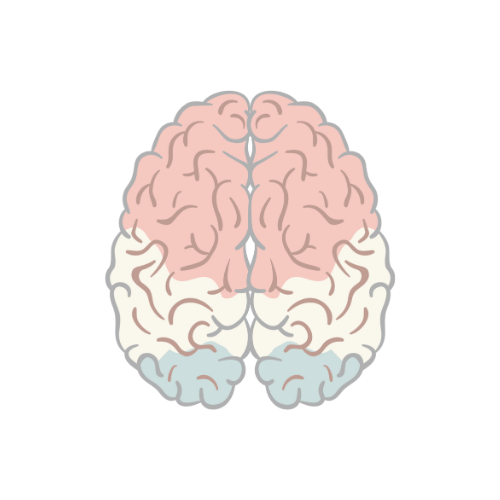This section looks at gallstone disease in general. For info on cholecystitis specifically click here.
Overview
- 75-90% of people with gallstones are asymptomatic, the remainder presents with symptoms because of complications
- Common gallstones complications include: cholecytitis, cholangitis and choledolithiasis
- Gallstones are divided into cholesterol (10%), pigment (10%) and mixed stones (80%)
- Gallstones also are classified by where they are formed:
- Intrahepatic
- Galbladder (Cholecystolithiasis)
- Bile duct (Choledocholithiasis)
- And by the conditions they cause when impacted:
- Acute cholecystitis
- Biliary colic
| Definition Cholelithiasis: gallstones Choledocholithiasis: presence of stones within the biliary tree Cholangitis: infection of the common bile duct, usually ascending from gut flora. Biliary Colic: Temporary obstruction of the cystic or common bile duct by a stone usually migrating from the gall bladder Acute Cholecystitis: Inflammation of the gallbladder due to obstruction in bile flow Chronic Cholecystitis: Chronic inflammatory cell infiltration of the gall bladder. Repeated inflammation causes thickening and fibrosis of gall bladder. |
Risk factors
- Cholesterol gallstones occur infrequently in the young and the prevalence increases linearly with age in both gender and approaches 50% at age 70 in women.
- Diet – Western Diet (e.g high protein, fat, refined carbs, sodium)
- Rapid weight loss – 50% of obese patients who undergo gastric bypass eventually develop gallstones within 6 months.
- Biliary sludge
- Drugs – Estrogens, lipid lowering agents (Statin is protective), Ceftrioxone
- Lipid Abnormalities
- Obesity and insulin resistance
- Diabetes Mellitus
- Previous surgery (i.e vagotomy or resection of the terminal ileum)
- Disease involving the distal small bowel (i.e Crohn’s disease) – alteration of bile constituents
| Remember: Fat, Female, Forty, Fertile, Fair |
| Remember Older adults are at a higher risk of complications |
Protective factors:
- Statins
- Ascorbic acid
- Coffee
Anatomy
Bile and types of stones
Bile Composition
- Cholesterol
- Phospholipids
- Bile pigments (from broken down haemoglobin)
| TYPES OF STONES AND THEIR DIFFERENCES | |||
| Types of stones | Cholesterol | Mixed | Pigment |
| Incidence | ~10% | 80% | ~10% |
| Morphology | Solitary and large | Usually multiple, faceted (calcium salts, pigment, and cholesterol) | Small, friable and irregular. Black or Brown. |
| Causes and risk factors | Female, Age, Obesity and Admirand’s triangle | Black pigment stones associated with haemolytic disease. Brown pigment stones associated with hereditary spherocytosis and malaria. | |
Admirand’s triangle: increase risk of stone if decrease lecithin, bile salts and increase cholesterol.
Clinical Presentation
Asymptomatic (75-90% of cases) Gallstones that do not impact do not cause any symptoms. Majority of people have stone that stay in the gallbladder or are to small to cause any problems.
Symptomatic Epigastric/right upper Quadrant pain of the abdomen, radiating to the back. Pain is constant or increasing lasting up to 6 hours. Pain after eating (Food in intestine stimulate CCK release → CCK stimulates gallbladder contraction → PAIN!)
| Courvoisier’s Law: The presence of jaundice, palpable gallbladder means that the jaundice is unlikely to be due to stones. It is tumour of the head of the pancreas until proven otherwise. |
Investigations
Investigations Check FBC, EUC, blood culture, serum amylase and lipase (in acute setting), LFT and serum glucose. Abdominal X-ray can reveal 10% of calculi (radio-opaque calculi). Ultrasound is the procedure of choice as it identifies stones, determine wall thickens and assess ductal dilatation. HIDA scan is useful when ultrasound findings are equivocal.
| Remember On ultrasound findings suggestive of an ultrasound echogenic focus (dense) and acoustic shadow. |
Management
The majority of gallstones are asymptomatic and remain so during a person’s lifetime. Gallstones are increasingly detected as a incidental finding on abdominal radiography or ultrasound scanning. Over a 10-15 yr period, approximately 20% of these stones will be the cause of symptoms with 10% having severe complications. Once gallstones have become symptomatic, there is a strong trend towards recurrent complications (~30%/yr), often of increasing severity
Asymptomatic: do not require treatment unless risk*
Symptomatic
Initial management is conservative: nil by mouth, IV fluids, opiate analgesia. Surgery is treatment of choice.
Management Surgical treatment is a cholecystectomy. The majority are done laparoscopically, often done as a day case. This is the treatment of choice for all patients fit of general anaesthetics. Indications for chlecystectomy:
- Symptomatic due to gall bladder stones
- *Asymptomatic patients with gall stones at risk of complications (diabetics, porcelian gall bladder, history of pancreatitis, long-term immunosuppressed).
| Remember Risk of laparoscopic cholecystectomy: conversion to open operation (5-10%), bile duct injury (<1%), bleeding (2%), bile leak (1%). |
Management Non-Surgical treatment include percutaneous drainage of gallbladder and dissolution or shock wave lithotripsy which is hardly used.
Complications and Prognosis
Common
- Cholecystitis
- Biliary colic
- Choledocolithiasis
- Cholangitis
- Acute Pancreatitis
| Charcots Triad: RUQ pain, WCC/fever, Jaundice |
| Reynolds Pentad: (Charcot’s triad) + altered mental status, hypotension |
Uncommon
- Emphysematous cholecystitis – acute infection of the gallbladder wall caused by gas-forming organisms
- Cholecytoenteric fistula +/- gallstone ileus
- Mirizzi’s syndrome
- Porcelain gallbladder
- Chronic cholecystitis
- Carcinoma of gallbladder
- Empyema: abscess in gallbladder
- Mucocele: stone in neck of gall bladder; bile is absorbed, but mucus secretion continue producing a large, tense globular mass in right upper quadrant.


Discussion